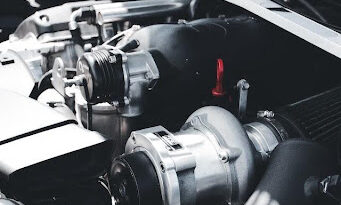How to Select and Design the Perfect Retail Lighting for Your Store in 5 Steps
Retail lighting can do much more than making your store look welcoming to customers; it’s an important aspect of how you brand yourself and your business. When selecting retail lighting, the first thing you should consider is the overall design of your storage space. Different retail spaces have different purposes and call for different types of retail lighting, so take some time to figure out exactly what you need before you invest in anything. Here are five steps to help you select and design the perfect retail lighting for your space.
1) What are your priorities?
Knowing what your priorities are before you start shopping is the best way to narrow down which type of light fixtures will work best. Here are five steps to help you select and design retail lighting that reflects your store’s identity:
1) Know how much light your store needs. How many watts does each fixture need? Ask an electrician or company representative this question if you don’t know.
2) Determine your current décor theme, color palette, environment, etc.
3) Think about your customers-their age groups, demographics (location), preferences, and desired moods-and use that information to pinpoint what kind of light is going to complement them. For example, do they want warm tones or cool tones? Daylight bulbs or incandescent bulbs? Soft white or bright white lights?
4) What types of lights do you want to use in your store – recessed lights, floor lamps, desk lamps, ceiling lights, or track lighting…? Again, figure out what looks good with the rest of your store. Incorporating all three types into a space can create different moods depending on where you put them.
2) Does this light meet code?
The code compliance of your store lighting is important, so make sure it follows the code. There are plenty of resources available online that can help you get started with selecting and designing retail lighting. You’ll want to take into account height restrictions, safety concerns, directional needs, and adjustability – but not all stores have the same needs. Make sure you consider a variety of options before finalizing your decision.
It’s best if you speak with someone who has experience installing light fixtures as they may be able to offer helpful insight based on their own knowledge. Don’t be afraid to ask questions about what does or does not work well with specific types of retail locations.
3) Is it bright enough?
Successful retailers know how important it is to have great lighting throughout their stores. When selecting a type of light fixture, you need to consider whether or not that type of light will work in your space. The shape, size, and depth of a room are factors that can change how bright it is. Additionally, do you want the lights on all day or only at certain hours?
Fluorescent tubes generally offer a higher level of brightness than their LED counterparts. You also need to take into consideration where you are going to place fixtures on shelves so that customers can easily see what they are looking at without having any glare on the object being displayed. Generally, stores with high ceilings should use larger fluorescent fixtures; those with lower ceilings should use smaller ones. You also need to make sure there are no hot spots or dark areas within your retail store’s space. The best way to avoid this problem is by using different types of lamps (fluorescents, LEDs) rather than one type alone. Once again: make sure there’s plenty of light!
4) What’s it going to cost you?r
There are many factors to take into account when selecting and designing retail lighting, but these five steps will help you with the process.
1) Compare: Take an inventory of your space or develop a plan with your architect or interior designer.
2) Decide: What are you trying to accomplish with your retail lighting? Is it aesthetic? Functional?
3) Purchase: Take into account location, height, color quality (CRI), heat production, cost per foot of installed length. 4) Install: Professional installation is key! Don’t just hire anyone…check out their references and make sure they are bonded & insured so that they have liability coverage. These professionals will be able to guide you through the process of picking and installing the perfect type of lights for your store.
5) Get Feedback: If possible, test out some types of lights before making a purchase decision – this is especially important if your store has unusual features like vaulted ceilings or big windows.
5) How do you want it to look?
For retail lighting design, it’s best if you have a clear idea of what you want your store to look like. If you’re looking for a cool, modern minimalist look with one main point of light in the center of the store, then go for recessed lighting that comes from a downward-facing fixture that is mounted flush with the ceiling (aka an interior downlight). One tip: when deciding where to put these fixtures, be sure not to put them too close together or your customers will just see straight lines and get a headache. Alternatively, if you want customers to feel like they are shopping on a mini-mall street then opt for exterior wall-mounted lights. When designing this type of space, it’s important to use multiple types of bulbs so that there is plenty of ambient light without any shadows. Outdoor wall sconces can also provide excellent indirect lighting indoors by using LED bulbs so that you don’t need to worry about power consumption as much.




